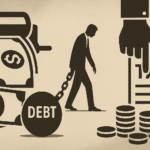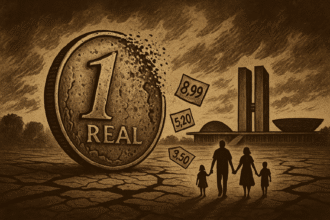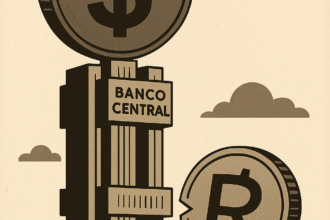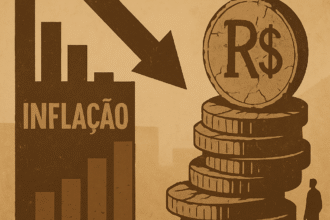In times of crisis, the temptation to take monetary shortcuts always resurfaces.
“We need to stimulate the economy.”
“There is no money in people’s pockets.”
“The government just needs to inject liquidity.”
The speech is seductive, but the logic is destructive.
Printing money is not the solution — it is fraud disguised as public policy.
This is the fourth text in the series “What is Printing Money?”
We have already shown the mechanism behind monetary issuance【1】, the groups that benefit at the expense of the population【2】, and the cycle of illusory growth followed by real collapse【3】.
Now, let's expose the heart of the problem: the lie of easy money.
💰 More paper, less value
Common sense holds that more money in circulation means more wealth.
But this is a confusion between means of exchange and real goods.
Money is a representation of value. It is not value itself.
It serves as a bridge between supply and demand, saver and investor, producer and consumer.
When the government prints unbacked currency, it increases the number of bridges — but does not build any roads.
The quantity of products and services in the economy remains the same.
The only thing that changes is the relationship between money and what it can buy.
The result?
Currency devaluation.
Price increase.
Loss of purchasing power.
🔁 The logic of inflation as policy
The State knows this — but it relies on the ignorance of the majority.
By creating money, the government can:
- Financing deficits without going through Congress;
- Expand popular programs without cutting costs;
- Stimulate consumption and credit without tax reform.
All this without declaring new taxes.
But inflation is exactly that: an undeclared tax.
A disguised confiscation.
A silent robbery.
As Thomas Sowell said:
“Inflation is the tax that can be imposed without legislation.”
📉 Who pays the bill?
The middle class, workers and small savers.
Those who do not have access to the backstage of power, to the banks that receive liquidity before everyone else, or to the assets that increase in value through monetary manipulation.
Inflation not only impoverishes - she impoverishes unequally.
Those who receive the new money first spend it before prices rise.
Those who receive last — or none at all — face already inflated prices.
This process of forced redistribution is what we call, as we saw in another post, Cantillon effect.
🧠 Wealth is not printed. It is produced.
What really creates wealth?
- Entrepreneurship.
- Private propriety.
- Free market.
- Capital accumulation through savings.
- Innovation and increased productivity.
None of these factors depend on printers or banking algorithms.
On the contrary: all of them are harmed by monetary instability generated by the State.
Inflation destroys the price signal.
It hinders the allocation of resources.
Discourages savings.
Distorts investment incentives.
It's like trying to build a house while the ground is shaking.
📚 Lessons from history: inflation is nothing new
The lie of easy money is not a modern phenomenon.
In ancient Rome, emperors devalued currency by mixing in base metals.
In Weimar Germany, rampant printing led to hyperinflation and economic ruin.
In Venezuela, the belief in “paper money” has destroyed the value of work.
And in Brazil?
We have lived through decades of galloping inflation, failed economic plans, confiscation of savings and a total loss of confidence in the national currency.
Those who forget history are condemned to repeat it — with compound interest.
🎭 Monetary populism: the illusionists' trick
Populist governments love easy money because it generates:
- Apparent growth (artificially inflated GDP);
- Feeling of improvement (short term);
- Possibility of spending without accountability.
But like every trick, It only works until the audience sees through the trickster.
And when confidence in the currency is lost, collapse is inevitable.
It is no coincidence that the greatest economic crises in history began with justifiable monetary expansion — and ended in political disgrace.
🔒 Currency control is people control
Monetary issuance is the most subtle instrument of coercion that the State possesses.
It decides how much money is worth in your pocket, how much savings will be eroded, and how much you will pay — indirectly — to support your machine.
Therefore, freedom thinkers have always defended solid coins, backed, competitive and outside of state control.
As Hayek would say:
“We will never have a sound currency again until we take it out of the hands of the government.”
🧭 Conclusion
The idea that printing money is an economic solution is one of the most widespread lies in modern history.
It serves power — never freedom.
Wealth cannot be printed.
It requires effort, voluntary exchange and respect for currency as an instrument of trust.
Everything that the modern state seems to despise.
🧾 If printing money solved anything, Venezuela would be Switzerland.
Stop falling for the “easy money” story.
📩 Subscribe to Economic Radar and receive analyses that expose the tricks of power directly to your email.





